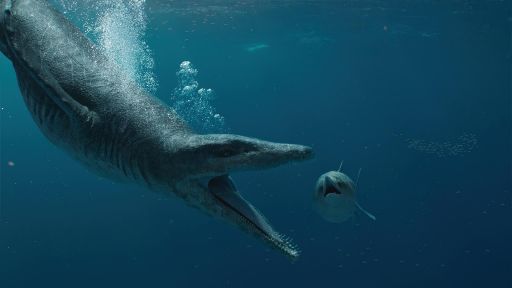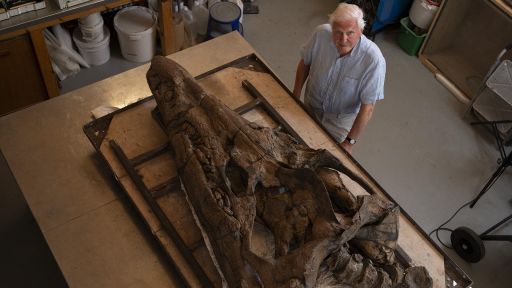Sir David Attenborough uncovers the secrets of the pliosaur, a monstrous marine predator. The pliosaur is believed to have been over 30 feet in length, similar to a doubledecker bus.
Features
Thought to have been over 30 feet in length, similar to a doubledecker bus.
In the late Jurassic, Europe was an archipelago of islands, much closer to the equator than it is today.
It seas were warm, shallow, and teeming with life.
And in these waters underneath my feet lurked the ultimate marine predator, the pliosaur.
Unlike dinosaurs that lived on land, these colossal marine reptiles spent their whole lives in the ocean.
Thought to have been over 30 feet in length, similar to a doubledecker bus.
They had long, broad flippers; short, strong necks; huge heads, and enormous jaws.
But there's still a lot we don't know about these great sea monsters, which is why this new discovery is so important.
Steve believes that the entire pliosaur may still be inside the cliff, but it's the skull on which he's concentrating.
A skull can reveal more about an animal than any other part of its skeleton.
Finding a complete specimen is rare, but it can tell us a great deal about how the animal lived.
- It's quite hot and dirty work.
- [Host] Steve and Chris think they will have about three weeks to dig the fossil out before the storms of late summer come.
- This is a learning curve.
I thought, stupidly, that it wouldn't be quite as hard as this.
We're probably over a meter in.
There's the skull there, just behind me.
It's up to us now to get it out without any damage.
- [Host] If the skull is successfully extracted, it'll be taken to the Etches Collection Museum in Cambridge, which was founded by Steve in 2016 and now contains nearly 3000 fossils from the Jurassic period.


